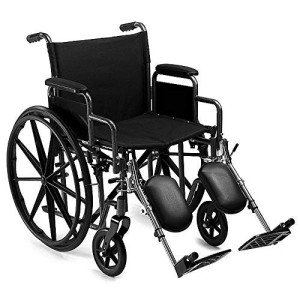Ten Reasons To Hate People Who Can't Be Disproved Bariatric Wheelchair Recliner

Bariatric Wheelchair Recliner
For users with bigger mobility requirements, a bariatric wheelchair recliner uses more convenience and convenience. These specialized chairs are constructed to accommodate much heavier weight capacities, have wider seat dimensions and more durable building.
Nevertheless, they also require more area and are frequently bigger than standard wheelchairs. This can make them more hard to steer in confined areas.
Seating Options
Unlike routine wheelchairs, bariatric designs have the ability to handle more weight without losing stability or sturdiness. They are frequently wider and feature strengthened parts for additional strength and longevity. They likewise use specialized upholstery that is long lasting, anti-microbial, and simple to tidy. Specialized cushioning can assist prevent pressure injuries such as sores and ulcers for those who spend long periods of time in their chairs.
Bariatric wheelchairs need to be sized and fitted by an ATP or OT to guarantee that they offer precise fit and convenience for the user. A comprehensive assessment consists of measuring seat-to-shoulder, hip-to-heel, and armrest-to-armrest distances to identify if a bariatric design is right for the person. This assessment is critical for making sure that the chair fits well and offers the proper quantity of assistance, comfort, and mobility to help the individual stay active.
A good bariatric chair needs to can reclining for comfy meals and other activities. It should also have the ability to assist in sit-to-stand transfers to prevent caregiver strain and injury. The very best bariatric wheelchairs are geared up with lateral and front-to-back support to make this procedure simpler.
Other features of bariatric wheelchairs include adjustable placing for enhanced posture and to alleviate seating-related discomfort. For instance, chairs with an anterior tilt can assist in helping with transfer and enhance lifestyle for those with minimal mobility by making it easier to get in and out of bed. For individuals with increased danger of pressure ulcers, a bariatric wheelchair that provides remarkable pressure redistribution is essential. For instance, Broda's models with Comfort Tension Seating aid reduce the risk of pressure ulcers by supplying ideal fit and by dispersing body weight evenly.
Recliner Mechanism
Bariatric wheelchair recliners use the strength and stability of a strong chair with the convenience of a reclining back. They can be utilized in hospitals, long term care facilities, and home settings to assist improve the quality of life for individuals with obesity-related health conditions. The tougher frames and broader seats allow bigger users to move more conveniently while assisting prevent injury to the user and those assisting with transfers.
The Chariot IV XTC-RC bariatric wheelchair has actually offset rear wheels to add stability and evenly distribute the client's weight while in different reclining positions. Its long lasting flame retardant nylon upholstery resists mildew and germs. A spreader bar serves as a back stabilizer and supplies a practical push handle for an attendant. Other features include tool-free adjustable raising leg rests and a cushioned headrest.
Footrests
In a totally reclined position, the back-rest is tilted forward toward the center of mass to decrease the user's head and neck motion. This minimizes the requirement for continuous repositioning and reduces the opportunity of pressure sores brought on by duplicated rubbing. It also permits users with a kyphosis, or stooped back, to raise the area of vision to avoid look pressure.
Created to accommodate bariatric users, these wheelchairs are equipped with swingaway footrests that retract when not in usage to provide unobstructed access to the user's front wheels and to help with side transfers. They are also reinforced at important load-bearing points and feature a chart pocket on the back upholstery. They have 24" x 1" black plastic wheels and non-marking polyurethane tires. Front rigging with heel loops is basic on the swingaway footrests.
Armrests
A bariatric wheelchair recliner enables a user to lie down in a likely position, taking pressure off the hips and back while also distributing weight equally. This type of chair is normally more comfy than basic wheelchairs, and it's readily available in a large range of seat sizes and arm styles to accommodate users of any size. A heavy duty frame is another characteristic that sets a bariatric wheelchair recliner apart from a basic wheelchair. Strong cross braces, reinforced gussets and extra-large riggings offer extra stability and safety.

A reclining bariatric wheelchair likewise features a padded headrest and padded footplates, which assist minimize pressure sores. The armrests are also padded to help users keep a natural posture while sitting in the chair. Furthermore, lots of reclining bariatric wheelchairs have an elevated footrest option to assist minimize pain from extended standing in one position.
There are numerous various types of wheelchair armrests offered, including butterfly armrests that bend outward like a butterfly to prevent the user from being squeezed while getting in and out of the chair. These armrests are designed to be much easier to grip than straight, brief arm rests on standard wheelchairs, making it easier for bariatric users to get in and out of the chair.
Other options include a molded foam arm trough that can be mounted to the armrests of any wheelchair to assist control unwanted lateral leaning. These arm troughs are easy to clean and satisfy California Flammability standards. They are likewise breathable to help reduce the danger of skin irritation.
Another wheelchair armrest choice is a cushioned desk length. web are simple to tidy and can be cut to match the height of any user's wheelchair. These are also perfect for use at a desk or table because they provide a comfy place to rest the arms while working or eating. Most wheelchairs can be fitted with these armrests, and they are typically consisted of in the box with the chair when acquired.
